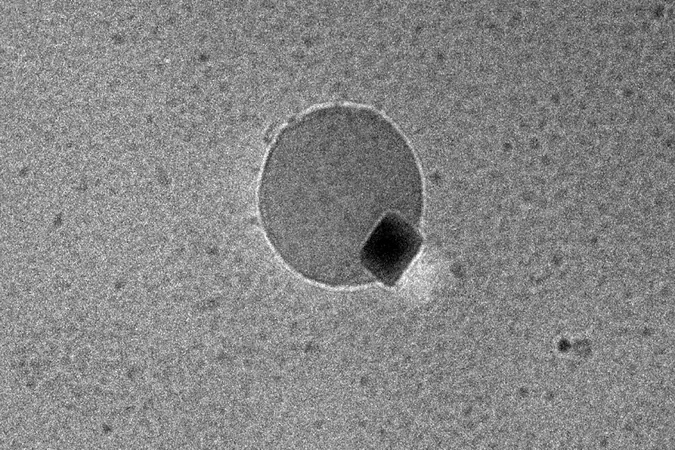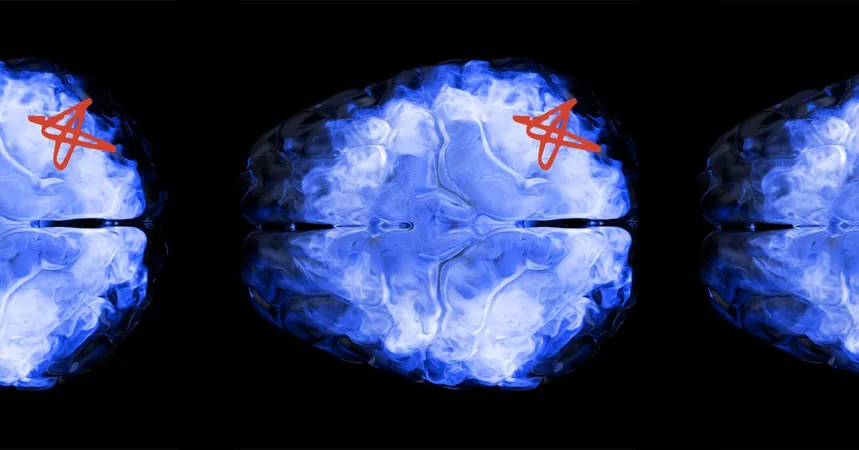
Groundbreaking Discovery: Scientists Capture the Birth of Water Molecules!
2024-10-02
Author: Jia
The Mystery of Water Formation
Have you ever wondered how water forms at the most basic level? Until recently, the process of water molecule formation had remained one of science's greatest mysteries, leaving us all thirsting for knowledge. From vast oceans to tiny puddles, the end result—water—is familiar to us all, but what about its initial creation? That curiosity has led researchers at Northwestern University to achieve a significant breakthrough: they’ve observed the formation of water molecules at an unprecedented scale.
Real-Time Observation of Water Birth
For the first time, engineers have witnessed the birth of water in real-time, and their findings could have profound implications not only for our planet but potentially for other worlds as well. This monumental study revolves around palladium, an intriguing metal known for its unique property of absorbing substantial amounts of hydrogen gas. Unlike many chemical reactions that require strict environments, palladium operates efficiently at room temperature and standard atmospheric pressure. However, the mechanics behind this phenomenon remained elusive—until now.
Excitement Among Researchers
PhD candidate Yukun Liu, who contributed to the study, expressed excitement over their novel method. "It’s a known phenomenon, but it was never fully understood," he explained. The researchers combined direct visualization of water generation with atomic-level structural analysis, creating a clearer picture of how this reaction unfolded.
New Technique and Achievements
In a groundbreaking advancement unveiled by Professor Vinayak Dravid, a new technique emerged that allows scientists to closely analyze gas molecules using a unique membrane. When examined under powerful electron microscopes, the technique achieved a remarkable resolution of 0.102 nanometers—the scale of the tiniest molecules.
Capturing Water Formation
The team confidently stated, "We think it might be the smallest bubble ever formed that has been viewed directly." The researchers were fortunate to be recording their findings as they captured the process of hydrogen molecules reacting with palladium, witnessing minuscule water bubbles emerging on its surface.
Drawing Parallels to Popular Culture
Drawing a fascinating parallel, Dravid likened their work to the plot of *The Martian*, where astronaut Mark Watney builds water from rocket fuel. "Our process is analogous," he said, "except we bypass the need for fire and extreme conditions. We simply mixed palladium and gases together."
Energy Measurements and Reaction Insights
Through meticulous energy measurements, the researchers confirmed they were observing water formation, with results aligning perfectly with known data from the water bonding process. This clarity enabled them to manipulate the conditions for water generation more precisely, uncovering insights such as the order of gas addition influencing reaction rates.
Potential Applications of the Research
The potential applications of this research are vast. By utilizing this streamlined water generation method, scientists could address water scarcity in arid regions on Earth, develop sustainable solutions for future space missions, or even pave the way for water generation on other planets.
Recyclability of Palladium
One of the most exciting aspects of their discovery is the recyclability of palladium. Liu highlighted, "Palladium might seem expensive, but it’s recyclable. Our process doesn’t consume it; only the gases are consumed, and hydrogen is the most abundant gas in the universe. After the reaction, we can reuse the palladium countless times."


 Brasil (PT)
Brasil (PT)
 Canada (EN)
Canada (EN)
 Chile (ES)
Chile (ES)
 España (ES)
España (ES)
 France (FR)
France (FR)
 Hong Kong (EN)
Hong Kong (EN)
 Italia (IT)
Italia (IT)
 日本 (JA)
日本 (JA)
 Magyarország (HU)
Magyarország (HU)
 Norge (NO)
Norge (NO)
 Polska (PL)
Polska (PL)
 Schweiz (DE)
Schweiz (DE)
 Singapore (EN)
Singapore (EN)
 Sverige (SV)
Sverige (SV)
 Suomi (FI)
Suomi (FI)
 Türkiye (TR)
Türkiye (TR)